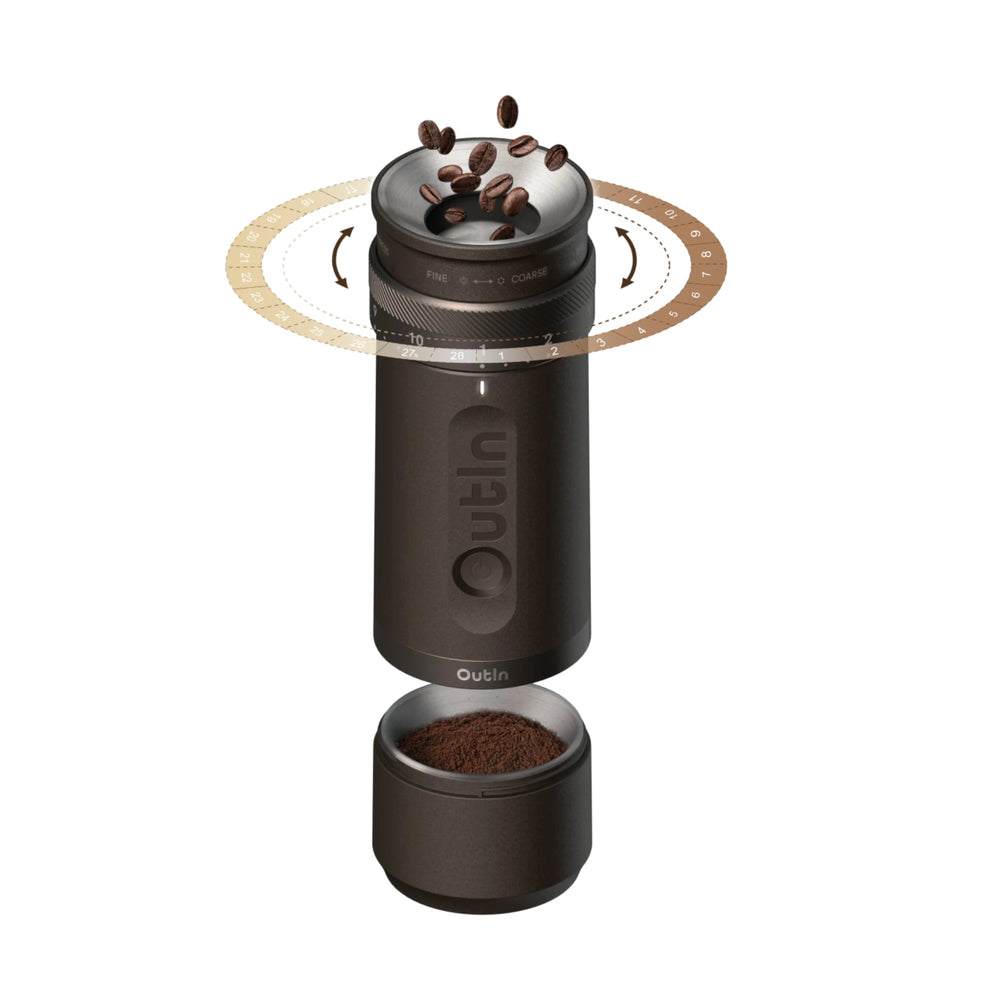Unlock the Secrets: Discover the Ultimate Coffee Grinder for Your Perfect Brew!
When it comes to brewing the perfect cup of coffee, the grinder plays a crucial role that often goes underestimated. The right coffee grinder can significantly impact the flavor and aroma of your brew, elevating your morning ritual from mundane to magnificent. A freshly ground coffee bean releases its essential oils and flavors, which can transform your coffee experience. There are various types of coffee grinders available, each with its unique features and advantages. Understanding these differences will empower you to make an informed choice that aligns with your brewing preferences and lifestyle.

Types of Coffee Grinders
Primarily, coffee grinders fall into two categories: blade grinders and burr grinders. The key distinction between them lies in their grinding mechanisms. Blade grinders use a rotating blade that chops the beans, while burr grinders crush the beans between two surfaces. This fundamental difference leads to varying levels of grind consistency. Blade grinders may result in an uneven grind, which can affect extraction during brewing, often leading to a less flavorful cup. In contrast, burr grinders provide a uniform grind size, crucial for optimal flavor extraction. Let’s delve deeper into each type to understand their pros and cons.
Blade Grinders
Blade grinders are typically more affordable and portable, making them a popular choice for many coffee enthusiasts. They operate with a simple design: a motor spins a blade that cuts through the coffee beans. One of the significant advantages of blade grinders is their compact size, making them ideal for travel or small kitchen spaces. However, the downside is that they tend to produce an uneven grind. This inconsistency can lead to some coffee grounds being over-extracted while others remain under-extracted, resulting in a lackluster brew. Additionally, the blades generate heat during the grinding process, which can affect the coffee's flavor. A friend of mine once shared how his blade grinder made his coffee taste burnt, leading him to invest in a burr grinder for a more satisfying experience.
Burr Grinders
Burr grinders come in two types: flat and conical. Both types excel in providing a consistent grind size, essential for achieving the best flavor from your coffee beans. Flat burr grinders feature two parallel grinding surfaces, while conical burr grinders use a cone-shaped surface to crush the beans. The benefits of burr grinders extend beyond consistency; they preserve the coffee's flavor better than blade grinders. This is particularly important for coffee aficionados who appreciate the nuanced flavors in different bean varieties. However, burr grinders typically come at a higher price point and can require more counter space. Despite these drawbacks, many enthusiasts, including myself, find the investment worthwhile. The first time I brewed coffee with a burr grinder, I was amazed at how much richer the flavor was compared to my old blade grinder. This transformation in taste truly underscores the importance of choosing the right grinder.
Key Features to Consider When Choosing a Coffee Grinder
When selecting a coffee grinder, several important features should be on your checklist. First, consider the grind settings; having multiple options allows you to tailor the grind size to various brewing methods, from fine for espresso to coarse for French press. Capacity is another factor; if you frequently brew for multiple people, a larger hopper can save time. Ease of cleaning is crucial as well—grinders can accumulate coffee residue, which may affect flavor over time. Lastly, build quality is essential for durability, especially if you use your grinder regularly. Each of these features contributes to your overall coffee experience, making it vital to choose a grinder that meets your individual needs.
How to Properly Use and Maintain Your Coffee Grinder
To get the best results from your coffee grinder, proper usage and maintenance are key. Start by measuring your coffee beans accurately; a general rule is to use about two tablespoons of coffee per six ounces of water. For burr grinders, it’s beneficial to calibrate the grind size based on your brewing method. To maintain your grinder, clean it regularly by brushing out the grounds and occasionally using rice or a grinder cleaning product to remove any oils. This practice not only prolongs your grinder’s life but also ensures that every cup of coffee is as fresh and flavorful as possible. A friend of mine swears by his weekly cleaning routine, claiming it has made a noticeable difference in the taste of his coffee.
Selecting the Right Coffee Grinder for Your Needs
Exploring the different types of coffee grinders and their features reveals that selecting the right grinder is essential for achieving the perfect brew. Whether you opt for a blade or burr grinder, understanding their mechanisms, advantages, and disadvantages will guide you in making a choice that suits your coffee preferences. By considering key features and committing to proper maintenance, you can elevate your coffee experience to new heights. Remember, a great cup of coffee starts with the right grind, so invest wisely in your coffee grinder!








